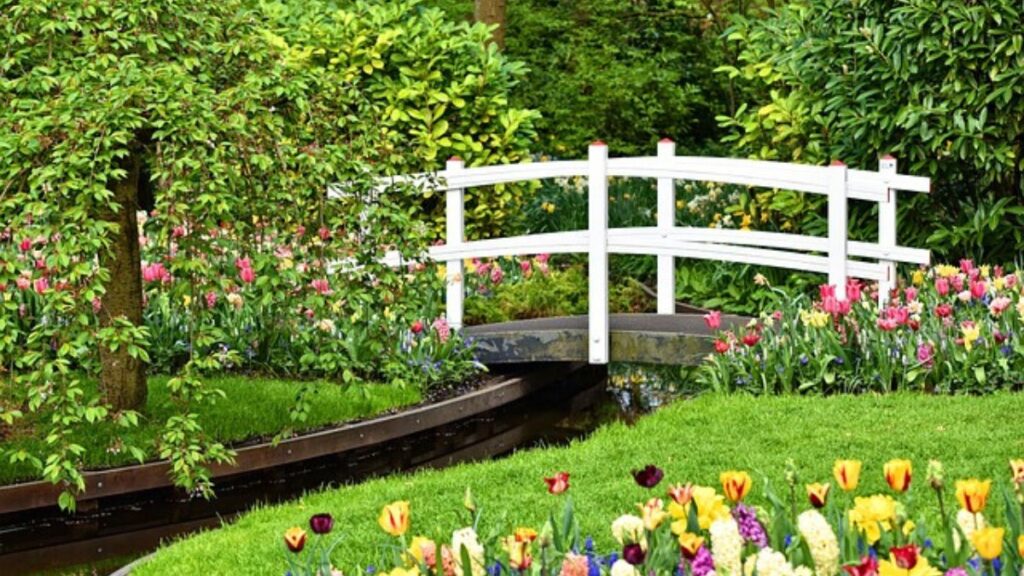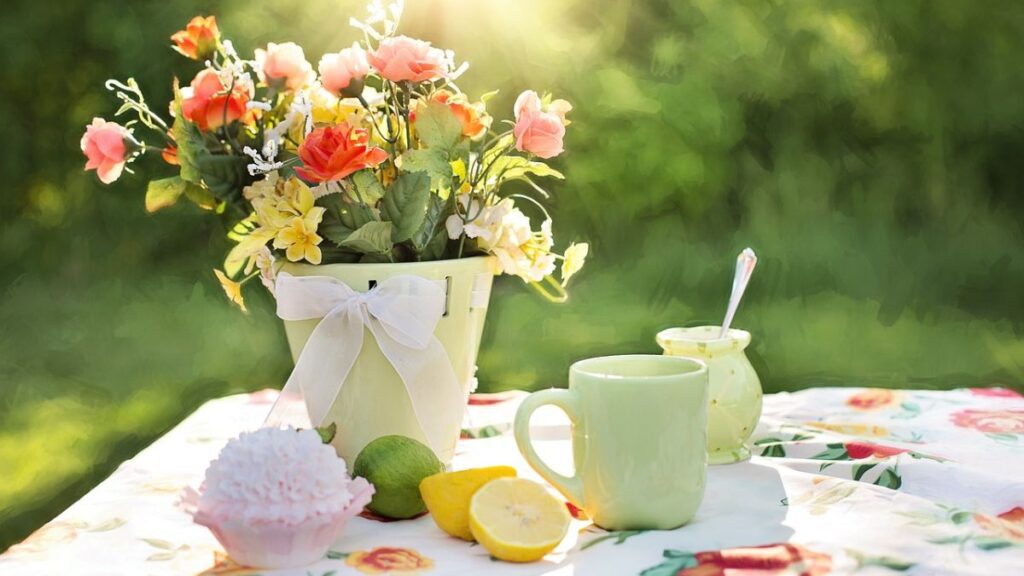Introduction:
Heat Wave Havoc: Top Tips to Keep Your Garden Green and Healthy

As summer temperatures soar, our gardens face the brutal challenge of heat waves. Prolonged exposure to extreme heat can stress plants, leading to wilting, scorched leaves, and even death. However, with some proactive measures, you can help your garden thrive despite the heat. Here are some top tips to keep your garden green and healthy during a heat wave.
During a heat wave Havoc, which methods effectively provide shade for plants?
During a heat wave, shading plants is essential to protect them from intense sun and high temperatures. Here are various strategies to provide shade for your garden plants:
1. Shade Cloths:
- Use UV-stabilized polyethylene shade cloths with varying density levels to provide desired shade.
- Secure the cloth over plants with stakes, poles, or a frame, ensuring elevation for proper air circulation.
2. Temporary Shade Structures:
- Large garden umbrellas can be strategically placed to provide shade where required.
- Lightweight tarps or old bed sheets draped over poles or frames offer temporary shading.
- Portable pop-up canopies are easy to set up and provide shade for larger garden areas.
3. Garden Fabric (Row Covers):
- Use lightweight garden fabric or floating row covers that allow air and water passage while partially blocking sunlight.
- Drape the fabric over plants and secure the edges with soil, rocks, or stakes.
4. Natural Shade:
- Plant taller or bushier plants to provide natural shade for smaller, delicate plants.
- Utilize the shade from existing trees or shrubs, or plant new trees or large shrubs to create shade in the future.
5. Shade Tunnels and Hoops:
- Create mini hoop houses using flexible PVC pipes covered with shade cloth or garden fabric.
- Construct shade tunnels by bending pipes or rods over garden rows and covering them with shade cloth or fabric.
6. Planting Techniques:
- Practice intercropping by planting heat-sensitive plants alongside taller, heat-tolerant plants for mutual shade.
- Mulch the soil to keep it cool and retain moisture, indirectly protecting plants from heat stress.
7. Reflective Mulch:
- Use reflective mulch, such as silver plastic or aluminum foil, to reflect sunlight away from the soil and lower plant temperatures.
- Spread the reflective material around the base of plants, ensuring secure anchoring.
8. DIY Shade Screens:
- Create custom shade screens using materials like burlap, lattice panels, or wooden planks.
- Build frames or screens to place around or over plants, allowing for easy repositioning as needed.
Tips for Effective Shading:
- Monitor sunlight patterns to provide maximum protection during the hottest part of the day.
- Maintain adequate airflow to prevent overheating and reduce humidity buildup.
- Use temporary shading solutions during peak heat and remove them during cooler parts of the day for necessary sunlight exposure.
By implementing these shading techniques, you can significantly mitigate the impact of heat waves on your garden plants, helping them stay cool and healthy during extreme summer temperatures.
During a heat wave, how frequently should my garden be watered?
During a heat wave, adjusting your watering habits is essential to maintain a healthy garden. Here’s a guide to how often you should water your garden in extreme heat:

General Guidelines:
- Early Morning or Late Evening Watering:
- Timing: Water your plants early in the morning or late in the evening when temperatures are cooler. This reduces evaporation and allows plants to absorb moisture effectively.
- Frequency:
- Daily Checks: Regularly monitor your garden for signs of drought stress, such as wilting, dry soil, or yellowing leaves.
- Watering Schedule: Most gardens need more frequent watering during a heat wave, typically every day or every other day, depending on the heat intensity and plant needs.
- Deep Watering:
- Technique: Instead of frequent shallow watering, provide a deep soak. Thoroughly water the soil to reach the root zone, encouraging deeper roots and making plants more resilient to drought.
- Duration: Water for a longer period to ensure the moisture penetrates the soil deeply.
Plant-Specific Considerations:
- Established Plants:
- Trees and Shrubs: Established trees and shrubs with deep root systems may need less frequent watering, perhaps every 3-4 days, but ensure the soil remains moist.
- Young and Newly Planted Plants:
- Increased Needs: Young or newly planted plants have shallower roots and require more frequent watering, often daily, to establish strong root systems.
- Container Plants:
- Frequent Checks: Potted plants can dry out quickly in the heat. Check them daily and water as needed, sometimes twice a day, especially for small containers.
- Vegetable Gardens:
- Consistent Moisture: Vegetables generally need consistent moisture. Water daily or every other day, ensuring the soil stays evenly moist but not waterlogged.
Soil and Mulching:
- Mulching:
- Benefit: Apply a thick layer of mulch around plants to retain soil moisture, reduce evaporation, and keep roots cool.
- Material: Use organic materials like straw, wood chips, or compost.
- Soil Type:
- Adjustment: Sandy soils drain quickly and may require more frequent watering, while clay soils retain moisture longer and may need less frequent watering.
Signs of Underwatering:
- Wilting: Leaves may droop and wilt during the hottest parts of the day.
- Dry Soil: The top inch or more of soil feels dry to the touch.
- Yellowing Leaves: Leaves may turn yellow or brown at the edges.
Suggest organic materials effective at retaining soil moisture during hot weather.
In hot weather, utilizing organic materials is a great strategy to enhance soil moisture retention and promote the well-being of your garden. Here are effective organic materials that can significantly improve soil moisture retention:

- Compost:
- Benefits: Improves soil structure, increases water-holding capacity, and provides essential nutrients.
- Application: Mix into the top few inches of soil or use as a mulch around plants.
- Mulch:
- Types: Straw, wood chips, shredded leaves, grass clippings, and bark.
- Benefits: Insulates the soil, reduces evaporation, suppresses weeds, and adds organic matter as it decomposes.
- Application: Apply a 2-4 inch layer around plants, avoiding contact with stems to prevent rot.
- Peat Moss:
- Benefits: Holds large amounts of water, improving moisture retention, especially in sandy soils.
- Application: Mix into the soil to enhance water-holding capacity.
- Coconut Coir:
- Benefits: Sustainable alternative to peat moss, excellent water retention, and improves soil structure.
- Application: Blend into the soil or use as a mulch.
- Leaf Mold:
- Benefits: Improves soil structure, increases moisture retention, and adds organic matter.
- Application: Work into the soil or use as a top layer mulch.
- Grass Clippings:
- Benefits: Decompose quickly, adding nutrients and retaining moisture.
- Application: Apply a thin layer around plants, avoiding thick layers that can mat down.
- Straw or Hay:
- Benefits: Excellent mulches that retain moisture, suppress weeds, and add organic matter as they break down.
- Application: Spread a layer around plants, ensuring good coverage without smothering.
- Wood Chips or Bark:
- Benefits: Long-lasting mulch that retains moisture, suppresses weeds, and decomposes slowly to improve soil structure.
- Application: Apply around trees, shrubs, and garden beds.
- Shredded Leaves:
- Benefits: Decompose quickly, adding nutrients and retaining moisture.
- Application: Use as a mulch or mix into the soil.
- Manure:
- Benefits: Well-rotted manure adds organic matter and nutrients to the soil, improving water-holding capacity.
- Application: Incorporate into the soil or use as a mulch, ensuring it is well-rotted to avoid burning plants.
Tips for Using Organic Materials:
- Apply Generously: Create an effective barrier against evaporation and insulate the soil.
- Maintain Moisture: Water the soil thoroughly before applying mulch to retain existing moisture.
- Renew Regularly: Organic mulches decompose over time, so replenish regularly.
- Avoid Over-Mulching: Aim for an even, moderate layer to prevent excessive moisture retention and potential root rot.
By incorporating these organic materials into your gardening routine, you can significantly enhance soil moisture retention and help your plants thrive during hot weather. Close monitoring of your garden and adjusting your watering routine are crucial during a heatwave to ensure plants stay hydrated. Deep watering in the early morning or late evening, combined with mulching and understanding your plants’ specific needs, will help maintain a healthy and thriving garden even in extreme heat.
Conclusion
Managing a garden during hot weather can be challenging, but several strategies can help your plants thrive. Watering wisely by providing deep, infrequent irrigation early in the day is crucial. Create shade for your plants using shade sails, umbrellas, or strategically planted trees and shrubs. Maintaining soil health with compost and mulch helps retain moisture and provides nutrients. Selecting heat-tolerant plants that are adapted to your region’s climate is also beneficial. Regularly monitor your plants for signs of stress and adjust your care routine accordingly to keep your garden vibrant and healthy.






